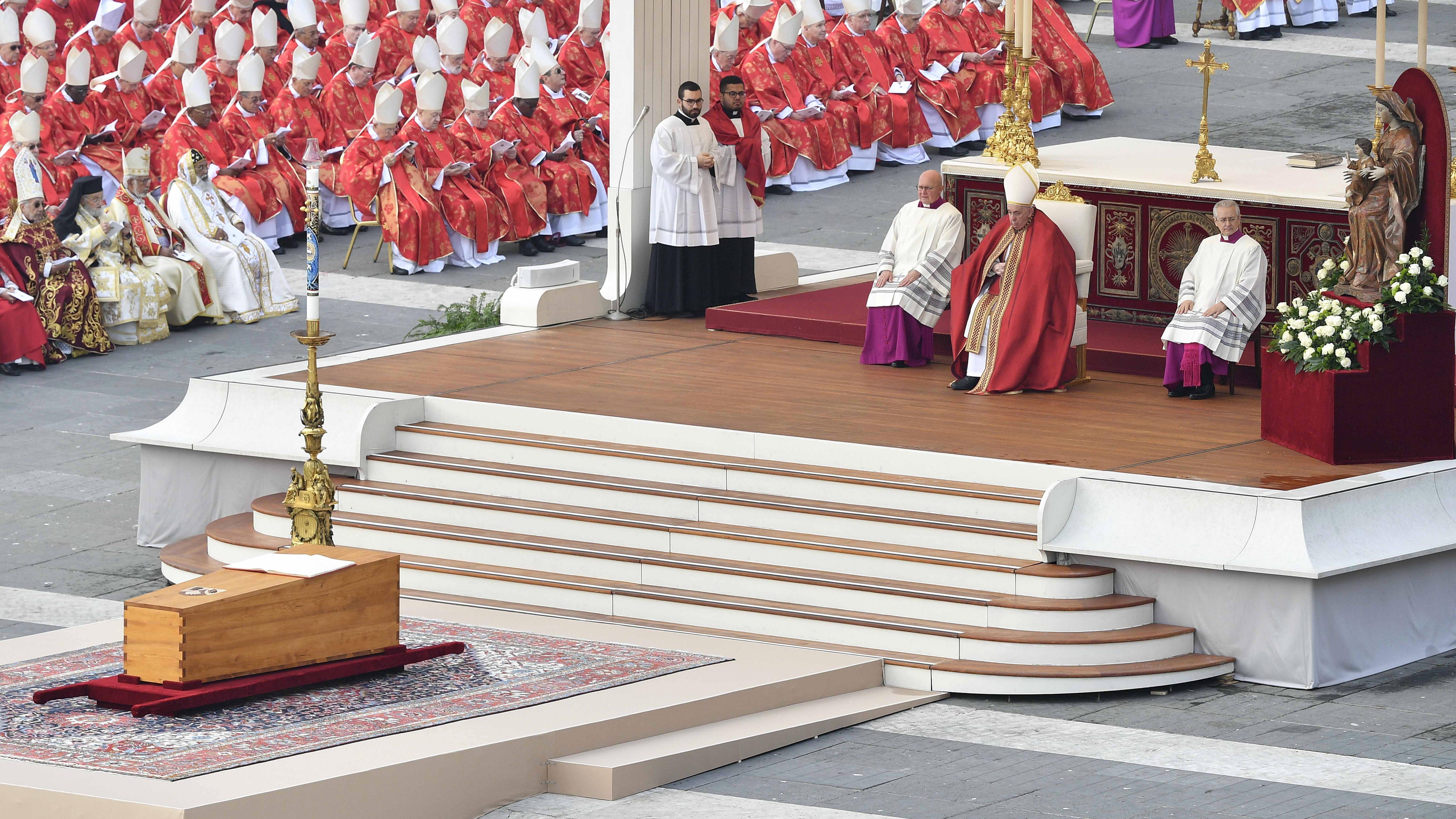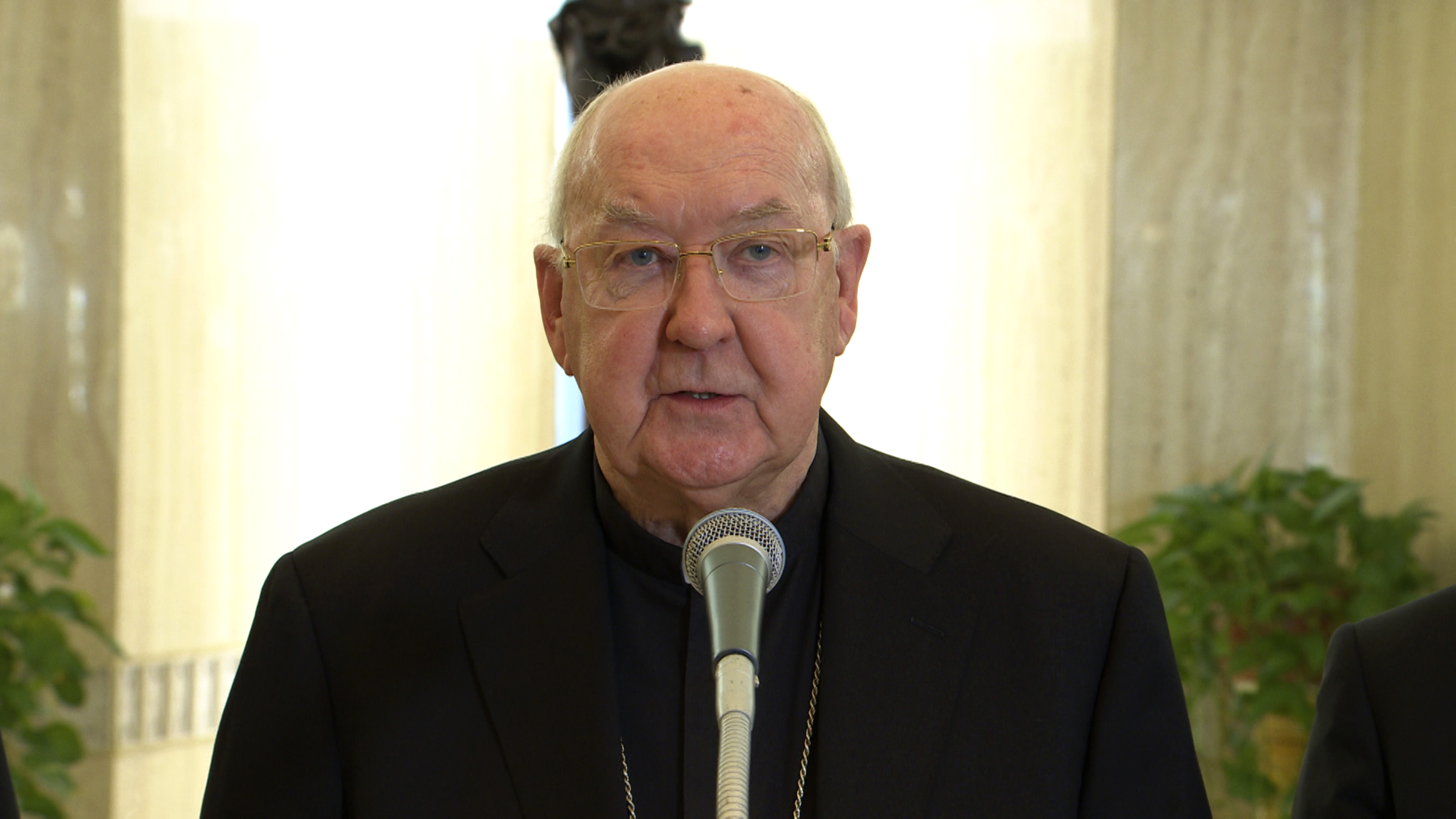Pope's Death: Funeral Rites, Burial & Successor Election
From Passing to Procession: The Sacred Rites Following a Pope's Death
Introduction: The End of a Pontificate, The Beginning of a Process
The death of a pope isn't just the passing of an individual; it's a seismic event for the Catholic Church and the world. It sets off a meticulously planned series of events steeped in tradition, solemnity, and spiritual significance, all designed to honor the departed pontiff and prepare for the election of his successor. Think of it as a carefully choreographed dance between mourning and anticipation, where every step is imbued with centuries of history and religious meaning.
Before the conclave to elect a new pope even begins, a specific set of rites and rituals must be observed. These involve the official certification of death, the public display of the body for respectful mourning, the funeral Mass, and finally, the burial. Pope Francis himself revised aspects of these rites, simplifying some of the funeral rituals to emphasize the pope's role as a bishop and allowing for burial outside the Vatican. But the core elements of this ancient process remain, a testament to the enduring power of tradition.
Let's delve into the fascinating world of papal funerals and burials, uncovering the steps taken, the traditions upheld, and the meaning behind it all.
Why the Need for Formal Rites and Rituals?
Why all the pomp and circumstance? It might seem elaborate to some, but these rites serve several crucial purposes. First, they provide a structured period of mourning for the Church and its followers worldwide. Second, they ensure the orderly transition of power, preventing any potential power vacuum or disputes. Finally, they honor the life and legacy of the pope, acknowledging his spiritual leadership and contributions to the Church. It's a respectful farewell, a somber acknowledgment of history, and a careful preparation for the future. These traditions are incorporated into a red book called “Ordo Exsequiarum Romani Pontificis,” which is Latin for “Rite of Burial for Roman Pontiffs.”
The "Ordo Exsequiarum Romani Pontificis"
The "Ordo Exsequiarum Romani Pontificis" is a slim red volume, essentially the playbook for papal funerals. It outlines the specific prayers, readings, and procedures that must be followed. It’s been updated and revised over the centuries, reflecting changes in liturgical practice and papal preferences.
Certification of Death: A Formal Declaration
The first step in the process is the formal certification of the pope's death. This is typically done by the Cardinal Camerlengo, who is responsible for administering the Church's property and finances during the interregnum (the period between the death of a pope and the election of his successor). What does this entail? Well, traditionally, the Camerlengo would gently tap the pope's forehead three times with a silver hammer, calling him by his baptismal name. While this practice has been discontinued, the Cardinal Camerlengo still formally declares the death, often witnessed by other Church officials and doctors.
Sealing the Apartments and the Pope's Personal Effects
Immediately after the death is certified, the papal apartments are sealed. This is to prevent any unauthorized access or removal of documents or property. Think of it as a formal lock-down, safeguarding the privacy and possessions of the late pontiff. Similarly, the Pope's personal effects, including his documents, are secured. This is to ensure the integrity of the historical record and prevent any potential misuse of sensitive information.
Notification of the Cardinals and the World
With the official death certificate issued, the next step is to inform the Cardinalate and the world. The Dean of the College of Cardinals is responsible for notifying all the cardinals, summoning them to Rome for the conclave. At the same time, the Vatican issues a formal announcement of the pope's death to the diplomatic community and the global media. The world then enters a period of official mourning. Churches ring their bells, and people around the globe pause to reflect on the life and legacy of the departed pope.
Preparation of the Body: Embalming and Vestments
The Pope's body is prepared for public viewing. This typically involves embalming to preserve the body and dressing it in papal vestments. These vestments, rich in symbolism, include the mitre (a tall, pointed hat), the pallium (a woolen band worn around the neck), and the papal ring. It's a visual representation of the pope's authority and spiritual office.
Public Viewing: Paying Respects to the Departed
The Pope's body is placed on public display, usually in St. Peter's Basilica, for several days. This allows the faithful to pay their respects and offer their prayers. Millions of people from around the world often travel to Rome to participate in this solemn ritual. The atmosphere is somber and reverent, a testament to the profound impact the pope had on their lives.
The Novendiales: Nine Days of Mourning
Following the death of a pope, the Church observes a period of nine days of mourning, known as the Novendiales. During this time, special Masses are celebrated each day, offering prayers for the soul of the departed pontiff. It's a time of intense spiritual reflection and remembrance, a chance for the Church to collectively mourn its loss.
The Funeral Mass: A Solemn Farewell
The culmination of the mourning period is the Funeral Mass, held in St. Peter's Square. This is a grand and solemn occasion, attended by cardinals, bishops, heads of state, and dignitaries from around the world. The Mass is a powerful expression of faith and hope, celebrating the pope's life and entrusting his soul to God.
Key Elements of the Funeral Mass
The Funeral Mass includes specific prayers, readings, and hymns that are unique to the occasion. The homily, or sermon, is typically delivered by a prominent cardinal, reflecting on the life and legacy of the late pope. The Mass also includes elements of remembrance, such as the placing of symbols representing the pope's office on his coffin.
The Burial: Laying the Pope to Rest
Following the Funeral Mass, the Pope's body is entombed. Traditionally, popes have been buried in the crypt beneath St. Peter's Basilica. However, Pope Francis has expressed a desire to be buried elsewhere, perhaps in the Basilica of St. Mary Major, where he often prays. This would be a departure from tradition, reflecting his emphasis on simplicity and humility.
The Papal Crypt: A Place of History and Remembrance
The papal crypt beneath St. Peter's Basilica is a place of immense historical and spiritual significance. It houses the tombs of many past popes, creating a tangible link to the Church's rich history. Visiting the crypt is a powerful experience, a reminder of the enduring legacy of the papacy.
The Interregnum: A Period of Transition
The period between the death of a pope and the election of his successor is known as the interregnum. During this time, the College of Cardinals governs the Church, ensuring the continuity of its operations. The Cardinal Camerlengo plays a crucial role during the interregnum, overseeing the Church's administration and preparing for the conclave.
The Conclave: Electing a New Pope
The most anticipated event following the death of a pope is the conclave, the meeting of the College of Cardinals to elect his successor. The cardinals are sequestered in the Sistine Chapel, where they deliberate and vote in secret. The world watches with bated breath as white smoke signals the election of a new pope. This is a defining moment for the Church, marking the beginning of a new chapter in its history.
Pope Francis' Reforms: A Shift in Emphasis
Pope Francis, known for his emphasis on simplicity and humility, has made some changes to the papal funeral rites. These reforms, incorporated into the "Ordo Exsequiarum Romani Pontificis," aim to simplify the rituals and emphasize the pope's role as a bishop. For example, he streamlined some of the prayers and ceremonies, reflecting his desire to avoid unnecessary extravagance.
Conclusion: Tradition and Transition
The death of a pope triggers a series of deeply meaningful rites and rituals. These serve not only to honor the departed pontiff but also to ensure a smooth transition of power within the Catholic Church. From the formal certification of death to the solemn Funeral Mass and the eventual burial, each step is imbued with tradition and spiritual significance. While Pope Francis has introduced some reforms, the core elements of this ancient process remain, connecting the present to the rich history of the papacy. These traditions offer a unique glimpse into the heart of the Catholic Church, a powerful reminder of faith, legacy, and the enduring search for spiritual leadership.
Frequently Asked Questions
Here are some common questions people have about the rites and rituals surrounding a pope's death:
- What is the role of the Cardinal Camerlengo?
The Cardinal Camerlengo is responsible for administering the Church's property and finances during the interregnum, the period between the death of a pope and the election of his successor. They also formally certify the Pope's death.
- Why are the Pope's apartments sealed after his death?
The papal apartments are sealed to prevent any unauthorized access or removal of documents or property. This helps to ensure the integrity of the historical record and prevent any potential misuse of sensitive information.
- What happens during the Novendiales?
The Novendiales is a period of nine days of mourning following the death of a pope. During this time, special Masses are celebrated each day, offering prayers for the soul of the departed pontiff.
- Where are popes typically buried?
Traditionally, popes have been buried in the crypt beneath St. Peter's Basilica. However, Pope Francis has expressed a desire to be buried elsewhere.
- How is a new pope elected?
A new pope is elected by the College of Cardinals during a conclave. The cardinals are sequestered in the Sistine Chapel, where they deliberate and vote in secret until a two-thirds majority is reached.

